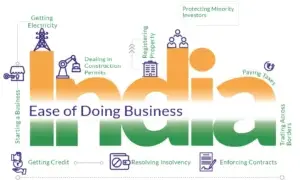By: Nazia Nabi
In our hyper-connected world, social media has become a lifeline for charitable causes, enabling global solidarity at the tap of a screen. But with this digital power comes a sobering reality: many posts now rely on the raw emotion of suffering children, often barefoot, sick, or crying, to spark engagement and donations. These images, though heart wrenching, risk transforming genuine hardship into viral content, where likes, shares, and emotional reactions become currency.
Islam teaches us that sadaqah (charity) must be given with dignity and discretion, never exploiting the vulnerable or parading their pain. The Prophet Muhammad (peace be upon him) said, “Charity that is given in secret extinguishes the wrath of the Lord” (Hadith, Tirmidhi). Yet today, the trend of filming distressed children for donations often does the opposite, broadcasting their suffering to millions without their understanding or consent.
This trend raises serious ethical red flags. Most of these children cannot grasp the lifelong consequences of their digital exposure or give informed permission to be featured online. Even when guardians allow it, we must ask, is that consent coming from empowerment or desperation, shaped by poverty and survival?
It is essential to recognize that emotional content featuring vulnerable children can easily cross the line from awareness to exploitation. What begins as a plea for help can quickly become a form of digital commodification, where trauma is monetized and empathy is manipulated. Once online, a child’s private moment is no longer private; it is archived, shared, and too often repurposed for malicious use or performative pity.
Moreover, many of these online fundraisers operate in a gray zone, with little transparency or accountability. Donors swipe their cards out of compassion but are rarely informed how or if the money directly benefits the child they saw onscreen. This lack of oversight not only erodes public trust but also deepens the injustice against those whose images sparked the campaign in the first place.
There is a clear difference between telling a story that inspires support and one that exploits pain. Emotional imagery is powerful, but it must be used responsibly, especially when children are involved. What’s shared to “help” today can become a source of shame or trauma tomorrow.
Another serious issue is the lack of transparency in many of these online fundraising efforts. Viewers are asked to donate out of compassion, but rarely are there mechanisms in place to verify how the money is spent. In many cases, funds raised in a child’s name may be diverted for general household use or even misused entirely. This not only undermines the trust of donors but also further marginalizes the children who were exploited to raise those funds.
Regrettably, some social media users and content creators have learned to leverage the pain of the vulnerable as a strategy for engagement. Tearful videos often generate more views, shares, and likes, metrics that can lead to increased income through platform algorithms or influencer sponsorships. In such cases, the line between humanitarian aid and emotional profiteering becomes dangerously thin.
So, what can be done? How can we help children in need without sacrificing their dignity, privacy, or long-term well-being?
First, we must demand higher ethical standards in how children are portrayed online. This includes advocating for stricter policies on social media platforms to flag and remove content that may exploit children, even if posted by family members. Content that involves children crying, suffering, or in medical distress should never be normalized as acceptable fundraising material.
Second, as digital citizens, we must also become smarter donors. Instead of responding to unverified pleas, we should give through transparent, reputable organizations that adhere to strict child protection policies. These organizations are better equipped to deliver sustainable aid without compromising ethical standards.
Third, we should promote storytelling that uplifts rather than degrades. Every child deserves to be seen as a person with potential and hope, not as a symbol of pity. Sharing stories of resilience, progress, and community support can be just as effective in inspiring generosity without compromising the child’s future.
As a society, we must ask ourselves: Are we helping these children, or are we helping ourselves feel better at their expense? True compassion requires more than just giving. It requires protecting the dignity of those we aim to help. A child’s pain is not public property. If we truly care, we must act responsibly.
Let’s be clear: pain should never be a marketing tool, and compassion should never come at the cost of a child’s future. Their tears should not be traded for clicks or cash because true charity uplifts silently, restores dignity quietly, and never makes suffering a spectacle.
In a world hungry for viral emotion, let us choose conscious compassion over clickbait empathy. Let us be givers, honoring both the right to be helped and the right to not be humiliated in the process.
If we truly care for children, then we must care responsibly. We should not only invest our financial resources but also uphold our ethical values.
The writer is Member, Child Welfare Committee, Baramulla
nabi.nazia@gmail.com




